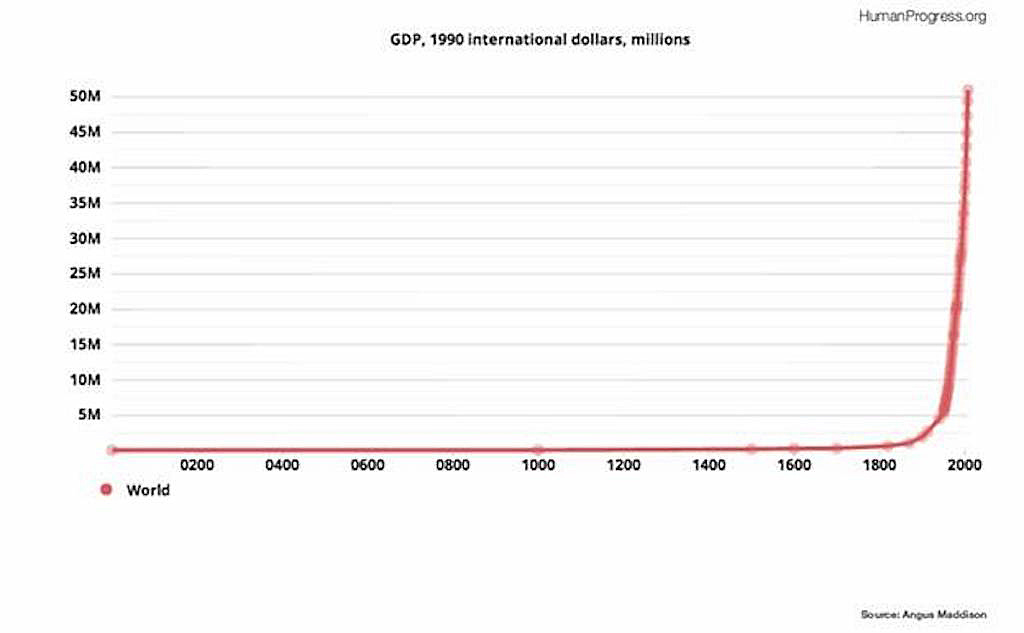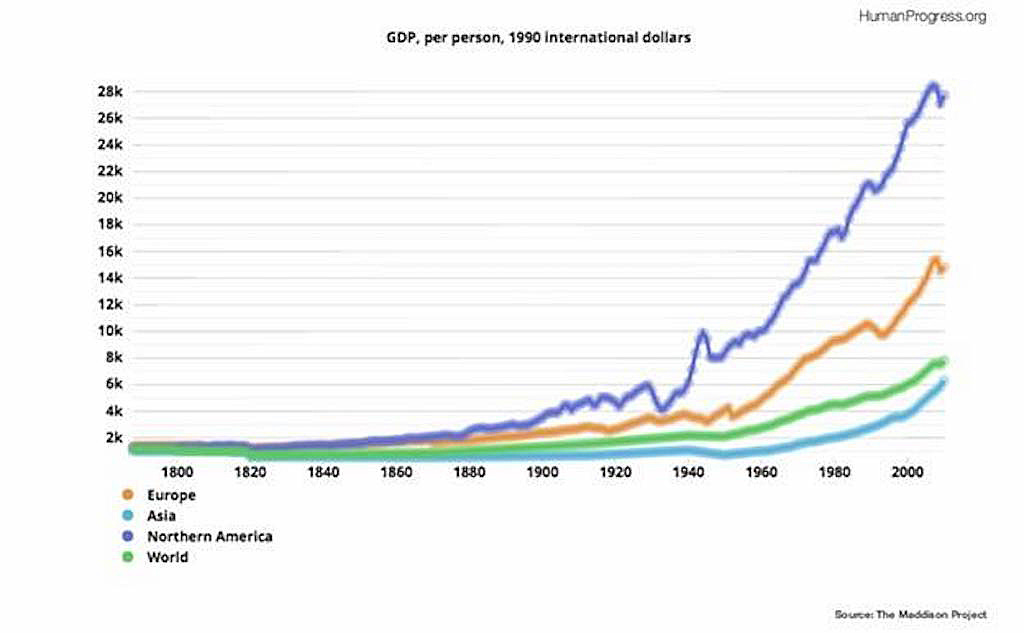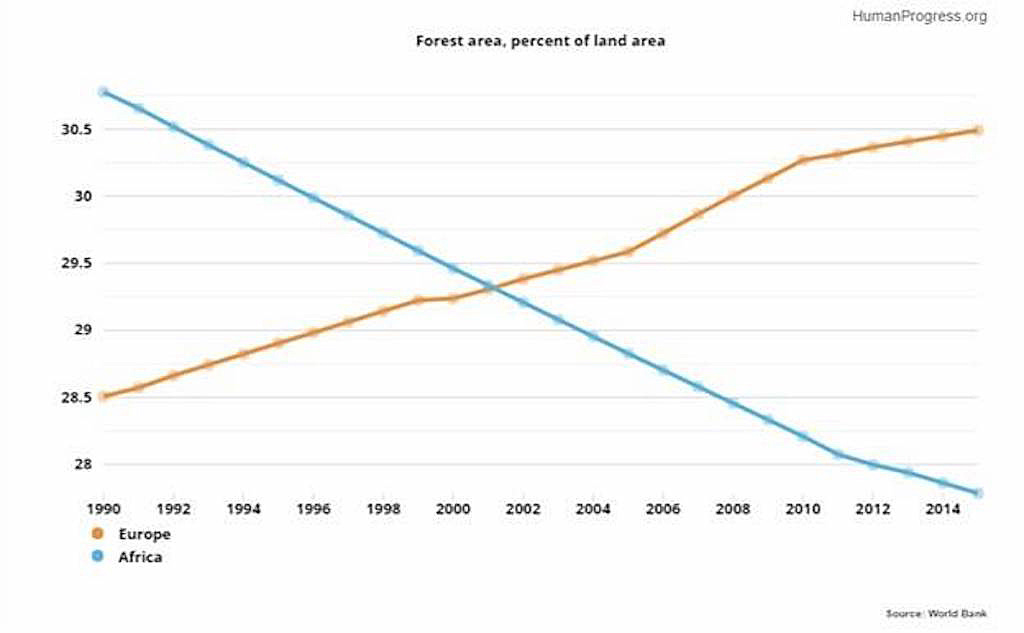The Most Important Graph in the World
The "Great Enrichment" of the last two centuries is absolutely staggering. It also carries an enormous lesson.
by Marian L. Tupy
March 10, 2018
Jonathan Haidt, the well-known psychologist from New York University, started as a "typical" liberal intellectual, but came to appreciate the awesome ability of free markets to improve the lives of the poor. Earlier this year, he penned an essay in which he pointed to what he called "the most important graph in the world." The graph reflected Angus Maddison's data showing a massive increase in wealth throughout the world over the last two centuries and which is reproduced, courtesy of Human Progress, below.
The "great enrichment" (Deirdre McCloskey's phrase) elicits different responses in different parts of the world, Haidt noted. "When I show this graph in Asia," Haidt writes, "the audiences love it, and seem to take it as an aspirational road map… But when I show this graph in Europe and North America, I often receive more ambivalent reactions. 'We can't just keep growing forever!' some say. 'We'll destroy the planet!' say others. These objections seem to come entirely from the political left, which has a history, stretching back centuries, of ambivalence or outright hostility to capitalism."
Haidt's experience mirrors my own. When giving talks about the benefits of free markets, audiences in Europe and America invariably note the supposedly finite nature of growth and express worry about the environmental state of the planet. Why? In Haidt's view, capitalist prosperity changes human conscience. In pre-industrial societies, people care about survival. "As societies get wealthier, life generally gets safer, not just due to reductions in disease, starvation, and vulnerability to natural disasters, but also due to reductions in political brutalization. People get rights."
This more prosperous generation, then, starts caring about such things as women's rights, animal rights, gay rights, human rights, and environmental degradation. "They start expecting more out of life than their parents did." All that is fine, of course, so long as the pampered youth in the West and newly empowered youth in the Far East remember that roughly 800 million people in the world, many of them in Africa, still live in absolute poverty and experience the kinds of existential challenges that only free markets can solve. Denying dirt-poor people access to cheap fossil fuel energy, for example, can mean a death sentence to a newborn child on life support in an electric-powered incubator in rural Africa.
Let me conclude with two final thoughts. First, there is no obvious reason why growth should not continue indefinitely, because economic freedom drives technological change, which is not only accelerating but reducing the cost of nearly everything and thus the relative wealth of nearly everyone.
Second, let's not fall into the trap of thinking that, because the initial stage of industrialization was bad for the environment, pre-industrial society saw man and nature coexist in harmony. Part of the reason why the Industrial Revolution started in England was that the country had to switch from almost depleted wood to coal as a source of energy. Industrialization, and subsequent enrichment, saved European forests, and it can do so in Africa as well. Indeed, nothing did so much to save the whales from extinction as John D. Rockefeller's mass-marketing of kerosene.
Tomorrow's technologies will do more, and greater, things still.
-- The Most Important Graph in the World originally appeared at Human Progress.








